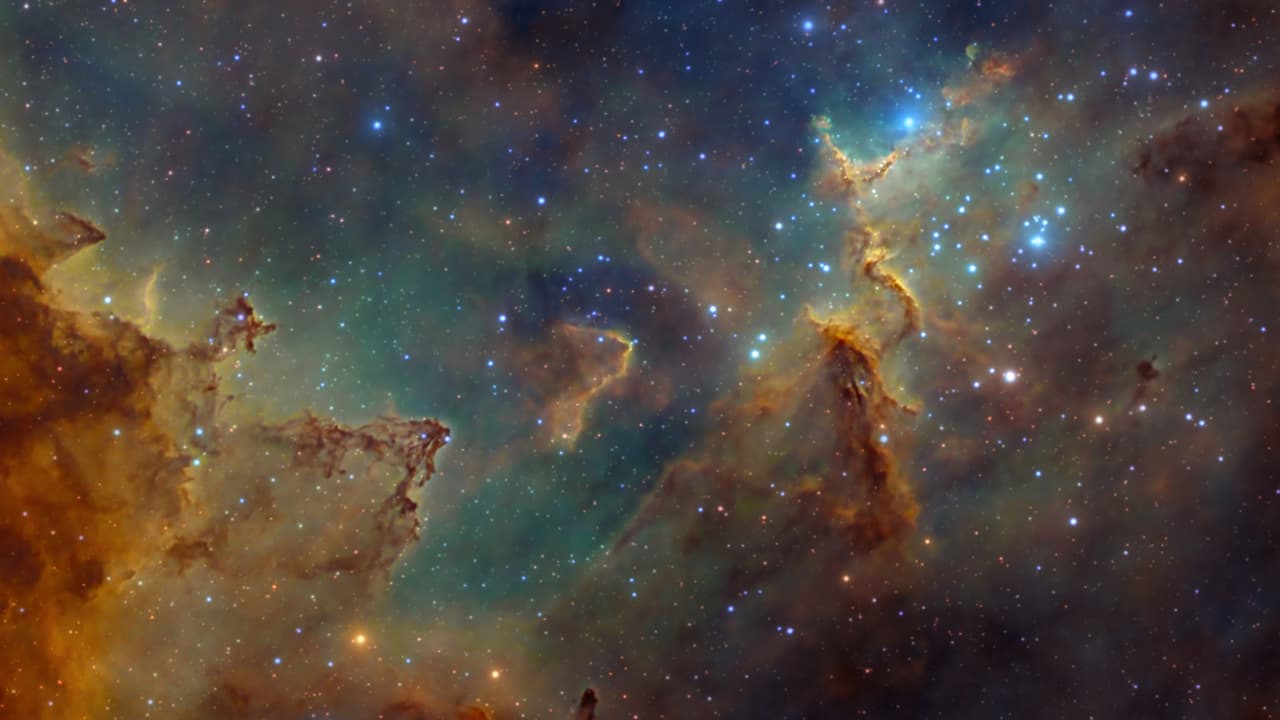Scientists may have solved the mystery of missing sulfur in space. A new study suggests sulfur is trapped in icy dust grains, forming crown-like rings and hydrogen-linked chains that hide it from telescopes, offering clues to cosmic chemistry.
For decades, astronomers and chemists have been puzzled by a strange cosmic mystery: where is all the sulfur?
On Earth, sulfur is everywhere. It shapes our oceans, spews from volcanoes, comes out of coal-fired power plants, and even plays a role in life itself. In fact, sulfur is the 10th most common element in the universe and an essential ingredient for planets, stars, and living things. Yet when scientists peer into space, they find far less of it than expected.
The Missing Element
When researchers look at giant clouds of dust and gas—the birthplace of stars—they expect to see plenty of sulfur. But telescope readings show that the amount of sulfur is thousands of times lower than what theories predict. For years, this mismatch has left scientists scratching their heads.
A New Clue in Cosmic Ice
A team of astrochemists from the University of Mississippi, the University of Hawaii, and Georgia State University believe they’ve found the answer. Their new study, published in Nature Communications, suggests that sulfur isn’t missing at all—it’s just hiding in plain sight.
In the icy depths of space, sulfur atoms can stick to frozen dust grains and rearrange themselves into tricky molecular shapes. Two of the most likely forms are:
- Sulfur crowns (S8) – eight atoms linked together in a ring that looks like a tiny crown.
- Polysulfanes – chains of sulfur atoms bound together with hydrogen.
These unusual forms don’t give off the same easy-to-spot signals that telescopes pick up for elements like oxygen or carbon, making them incredibly difficult to detect.
Why Telescopes Miss It
When scientists use powerful instruments like the James Webb Space Telescope, they rely on light “fingerprints” to identify elements in space. Oxygen, carbon, and nitrogen give off clear, predictable signals. But sulfur doesn’t behave that way. Because it can constantly change shape—sometimes forming rings, sometimes chains—it hides from our usual detection methods.
“It never maintains the same shape,” said Ryan Fortenberry, an astrochemist at the University of Mississippi. “It’s kind of like a virus—as it moves, it changes.”
Putting It to the Test
To back up their theory, the team recreated interstellar conditions in the lab. By simulating icy space environments, they showed that sulfur-rich molecules can form and remain stable on frozen dust grains. This means that the “missing sulfur” may simply be locked away in ice until star-forming activity releases it back into space.
Why It Matters
Solving the sulfur mystery is more than just an academic exercise. Understanding how sulfur behaves in space could help scientists get a clearer picture of how stars, planets, and even the building blocks of life form. It could also improve our knowledge of planetary chemistry—both in our solar system and beyond.
As Fortenberry explained, sulfur’s chemistry has practical consequences on Earth too, from air pollution to ocean acidity. The better we understand it in space, the more we can learn about its role in shaping environments, both here and across the cosmos.
A Step Toward Answers
For now, astronomers have a new road map: by looking for these hidden molecular shapes in star-forming regions, they may finally be able to account for sulfur in the universe. Future observations with advanced telescopes could confirm whether this elusive element has simply been hiding in icy, ever-changing forms all along.
